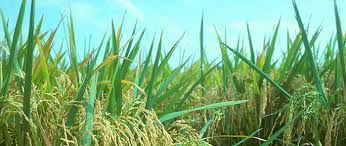 To generate a crop resistant to some herbicide gives the farmer the capacity to spray the crop with that herbicide, removing weeds without the crop suffering any damage. This promotes crop management and allows the farmer to stop using multiple herbicides to apply a broad spectrum herbicide.
To generate a crop resistant to some herbicide gives the farmer the capacity to spray the crop with that herbicide, removing weeds without the crop suffering any damage. This promotes crop management and allows the farmer to stop using multiple herbicides to apply a broad spectrum herbicide.
Crops resistant to herbicides
Resistance against herbicides is not a complete negative reality. Thanks to there is some resistance to herbicides, it has been possible to develop crops that can withstand application, and those crops are known as GMO (Genetically Modified Organisms) in their common environment. The cotton, corn, canola, and soybeans that have resistance to glyphosate are currently planted constantly in the United States. Herbicide resistant crops have been developed to maximize the return of herbicide development.
Reach isolating new herbicides is a paused and expensive process. Companies are looking for to retain the largest portion of the market for their products. That is why the advantage of having an herbicide resistant crop is that you have the possibility of applying herbicides in the top of the crop to neutralize the action of weeds.
In this way the decision making of the provider is simpler. In general is only necessary apply it once or twice per season for provides a control a long with it. Regrettably that is able to reduce excessively the undergrowth strategy.
The implementation of this strategy hampers the implication of a complete strategy and can significantly increase selection pressure over weeds. Almost all cases of herbicide resistance are a consequence of monoculture situations in which a limited direction was taken to confront weed control points.
There is a high possibility for significant market opposition to the acquisition of genetically modified crops. The resistance to the production and use of genetically modified organisms, among them herbicide resistant crops, has manifested in many sectors. Resistance has great success in Europe and Japan, which are important markets for US agricultural exports.
Another inquietude, is the use of herbicide resistant crops is the possible transmission to plants with a close relationship to the crop resistance gene. For Canada this has been a big concern with regard to herbicide resistant canola species and wild mustard.
And is that the seed for genetically modified crops possess a higher cost than non-transgenic seeds since, it is necessary to cancel the fees of the technology implemented to develop genetically modified seeds. Companies which offer herbicide-resistant crops to the market add a fee for the application of technology to the price to buy of each seed bag.
Currently there are sundry cropping systems on the market which have resistance to herbicides. They provide a resistance to the following herbicide families: Glufosinate, imidazolinone and glyphosate, which are available in different trade names.
Potential benefits
- Better control of weeds and better benefits through minimum labor requirements.
- Decrease in the application of herbicides, reducing the amount of applications and the total import (in volume or weight) of herbicide applied.
- Increased yields through optimal weed management and thus, increased benefits.
- Substitution of herbicides which are damaging for the environment.
Potential dangers.
- By itself, the crop can become a problem of weeds, either by the dispersion of the field or when the seed sown in the harvest emerges in the next cultivation (known as voluntary weeds). According to many weed specialists, this is an inevitable action.
- Development in the increase in the application of a specific herbicide to a tolerant crop, can encourage the emergence of resistant weeds.
- There is a possibility that genetically modified (GM) crops will pollinate non-transgenic or organic cultivations, causing a genetic contamination with strange genes. Until now, there are no acceptable levels of contamination and there is a high probability that organic agriculture statutes will require zero levels.
- The widespread application of herbicides of broad spectrum (as glyphosate) will result in the effective destruction of weeds in the fields, also destroying some of the remaining food sources for birds and other wild species on the farmland. The use of herbicides and pesticides is attributed thanks to the dramatic decline of farm bird species in the United Kingdom.
In general terms of weight and volume (especially thanks to the potency of herbicides of broad spectrum), it is anticipated the dramatic increase in the use of specific herbicides, which generate crops resistance.




